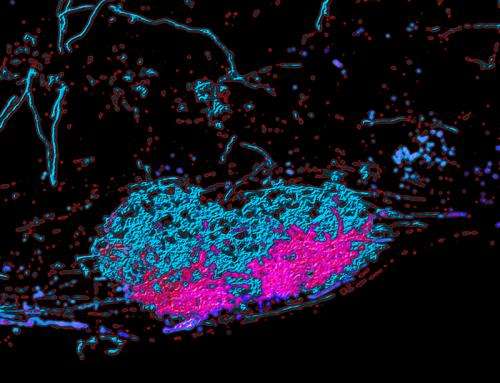How neurons control fine motor behavior of the arm

Motor commands issued by the brain to activate arm muscles take two different routes. As the research group led by Professor Silvia Arber at the Basel University Biozentrum and the Friedrich Miescher Institute for Biomedical Research has now discovered, many neurons in the spinal cord send their instructions not only towards the musculature, but at the same time also back to the brain via an exquisitely organized network. This dual information stream provides the neural basis for accurate control of arm and hand movements. These findings have now been published in Cell.
Movement is a fundamental capability of humans and animals, involving the highly complex interplay of brain, nerves and muscles. Movements of our arms and hands, in particular, call for extremely precise coordination. The brain sends a constant stream of commands via the spinal cord to our muscles to execute a wide variety of movements. This stream of information from the brain reaches interneurons in the spinal cord, which then transmit the commands via further circuits to motor neurons innervating muscles. The research group led by Silvia Arber at the Biozentrum of the University of Basel and the Friedrich Miescher Institute for Biomedical Research has now elucidated the organization of a second information pathway taken by these commands.
Cc to the brain: one command – two directions
The scientists showed that many interneurons in the mouse spinal cord not only transmit their signals via motor neurons to the target muscle, but also simultaneously send a copy of this information back to the brain. Chiara Pivetta, first author of the publication, explains: "The motor command to the muscle is sent in two different directions – in one direction, to trigger the desired muscular contraction and in the other, to inform the brain that the command has actually been passed on to the musculature." In analogy to e mail transmission, the information is thus not only sent to the recipient but also to the original requester.
Information to brainstem nucleus segregated by function
What happens to the information sent by spinal interneurons to the brain? As Arber's group discovered, this input is segregated by function and spatially organized within a brainstem nucleus. Information from different types of interneurons thus flows to different areas of the nucleus. For example, spinal information that will influence left-right coordination of a movement is collected at a different site than information affecting the speed of a movement.
Fine motor skills supported by dual information stream
Arber comments: "From one millisecond to the next, this extremely precise feedback ensures that commands are correctly transmitted and that – via the signals sent back to the brain from the spinal cord – the resulting movement is immediately coordinated with the brain and adjusted." Interestingly, the scientists only observed this kind of information flow to the brain for arm, but not for leg control. "What this shows," says Arber, "is that this information pathway is most likely important for fine motor skills. Compared to the leg, movements of our arm and especially our hands have to be far more precise. Evidently, our body can only ensure this level of accuracy in motor control with constant feedback of information."
In further studies, Silvia Arber's group now plans to investigate what happens if the flow of information back to the brain is disrupted in specific ways. Since some interneurons facilitate and others inhibit movement, such studies could provide additional insights into the functionality of circuits controlling movement.
More information: Pivetta C, Esposito MS, Sigrist M, Arber S (2014) "Motor-circuit communication matrix from spinal cord to brainstem neurons revealed by developmental origin." Cell, DOI: 10.1016/j.molcel.2013.12.013



















